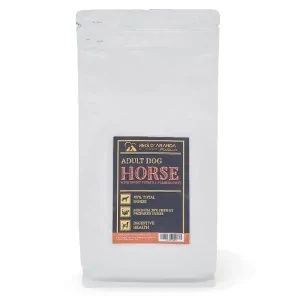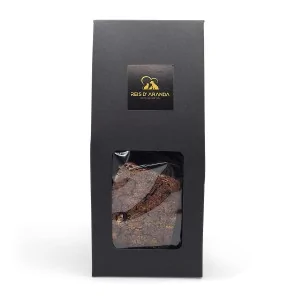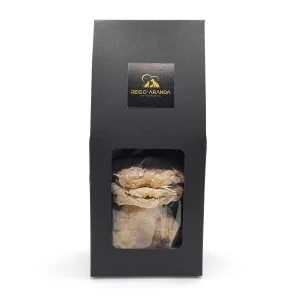Its name says it all: the Vienna blue rabbit comes from Austria. Not only is it beautiful with its shiny blue-grey...
THE SMOOTH COLLIE
INTRODUCTION
The Smooth Collie is a breed of dog originally developed as a sheepdog. It is a short-haired version of the long-haired Collie or Rough Collie. Some canine associations consider the Smooth and Smooth Collie to be variations of the same breed.
THE ORIGIN OF THE SMOOTH COLLIE
These dogs originated in the highlands of Scotland, along with the long-haired collie. In those mountains they served as herding dogs, but in the course of time they also became highly prized companion animals, although they never achieved the popularity of their long-haired relatives.
Today, the long-haired and the short-haired collie are recognised as a single breed of dog by the American Kennel Club, but are treated as separate dog breeds by the Fédération Cynologique Internationale (FCI).
THE SMOOTH COLLIE STANDARD
GENERAL APPEARANCE: The Smooth Collie is a dog endowed with intelligence, liveliness and activity. He carries himself with dignity as a result of his perfect anatomical structure, each part being in proportion to the whole. His physical structure should show strength and activity, with no signs of heaviness or coarseness. Expression is very important. In making a relative assessment, consideration should be given to the balance and perfect combination of skull and muzzle, the size, shape, colour and placement of the eyes, and the correct position and carriage of the ears.
IMPORTANT PROPORTIONS: Seen in profile, the top of the skull and muzzle are in two straight, parallel lines of equal length. The body is slightly long in comparison to the height at the withers.
HEAD: The characteristics of the head are very important and should be considered in proportion to the size of the dog. The head, when viewed from the front or from the side, is wedge-shaped, clearly truncated and smooth in outline. The midpoint between the inner corner of the eyes is the point of balance of the length of the head.
CRANIAL REGION:
SKULL: The skull is flattened. The sides taper gradually and smoothly from the ears to the tip of the nose. The height of the skull measured from the supraorbital arch to the submaxillary region should never be excessive (overall not too deep).
STOP: Slight but perceptible. The midpoint between the inner corners of the eyes is the midpoint of a well placed stop or depression.
FACIAL REGION:
TRUFA: Must always be black.
Muzzle: The smooth, well rounded end of the muzzle is truncated, but never square or pointed.
JAWS / TEETH : The lower jaw is strong and well defined. Teeth of good size.
Jaws should be strong, with sound and complete dentition with scissor bite, i.e. the inside of the upper incisors in close contact with the outside of the lower incisors and set at right angles to the jaws.
CHEEKS: Not prominent.
EYES: A very important feature, giving a gentle expression. They are of medium size (never too small), set at a slight slant, almond-shaped and dark brown in colour, except in those blue merles in which the eyes (one or both eyes, or part of one or both) are blue or mottled blue. The expression is full of intelligence, with a lively and alert look when the dog is attentive.
EARS: The ears are moderately large, broadest at the base and set neither too close together nor too wide apart on the sides of the head. When the dog is at rest, they are laid back, but when attentive, they are brought forward and carried semi-erect, i.e. about the first two thirds of the ear are erect and the upper third falls naturally forward, below the horizontal.
NECK: Muscular, strong, of good length and well arched.
BODY
BACK : Straight and firm.
LOIN: Slightly arched.
CHEST: Relatively broad behind shoulders. Ribs well sprung.
TAIL: The tail is long, the last vertebra reaching at least to the hocks. When the dog is at rest, the tail is carried low but is slightly upturned at the tip; when excited it may be carried gaily but never over the back.
LIMBS
FOREQUARTERS:
GENERAL APPEARANCE: Forelegs straight and muscular. Moderate bone.
Shoulders: Shoulders sloping, well laid back. Good return of upper arm with elbow below withers.
ELBOWS: Turning neither in nor out.
FOREARM: Muscles have a certain thickness.
Pastern: Flexible, but not weak.
HANDS: Oval, with strong pads. Fingers should be arched and close together.
HINDQUARTERS: Well defined and sinewy.
MUSCLE: Muscular.
KNEE: Well angulated.
HOCKS: Hocks should be well let down and powerful.
HANDS: Oval with strong pads. Toes should be arched and close together.
GAIT / MOVEMENT: Movement is a distinguishing characteristic of this breed. A good moving dog should never have his elbows turned out, yet when moving, his front feet should remain relatively close together. Gait movement by crossing the limbs longitudinally or laterally and swinging the body is highly undesirable. Seen from behind, the hind legs from the hocks to the ground should move parallel but not close together; seen from the side, the movement is united. The hindquarters are powerful and give plenty of drive. A reasonably long stride is desirable and should be light and without apparent effort.
COAT
HAIR: The coat is short and smooth. The outer coat is of harsh texture; the undercoat is very dense. Should not be groomed or clipped.
COLOUR: Three colours are recognised:
- (Cinnamon with white || Any shade from light golden to dark mahogany or nuanced zebelline. Pale straw and cream colours are highly undesirable).
- TRICOLOUR (Black, tan and white || A reddish reflection on the coat is highly undesirable, usually produced by uncontrolled exposure to the sun).
- BLUE MERLE (Rich tan markings are preferred, although their absence should not be penalised. Large black patches, slaty colour or reddish reflections in the outer or undercoat are highly undesirable).
Dogs of all the above colours should have the typical white Collie markings to a greater or lesser degree. The following markings are desirable: full or partial white collar, white chest, white limbs, feet and tip of tail. A white blaze on the muzzle or head is permissible. White markings which must not extend behind the withers or above the hocks. A completely white coat or one in which white predominates is highly undesirable.
SIZE AND WEIGHT:
HEIGHT AT WITHERS:
- Males between 56 and 61 cm.
- Bitches between 51 and 56 cm.
WEIGHT:
- Males between 20.5 and 29.5 kg.
- Bitches between 18.0 and 25.0 kg.
FAULTS: Any departure from the foregoing points should be considered a fault and the seriousness with which the fault should be regarded should be in exact proportion to its degree and its effect upon the health and welfare of the dog and its ability to perform its traditional work.
DISQUALIFYING FAULTS:
- Aggressiveness or extreme shyness.
- Any dog showing clear physical or behavioural abnormalities.
- Double merle
- Microphthalmia
- Deformed mouth
- Deafness
- Total or partial blindness
- Any other colour not mentioned.
N.B.:
- Males should have two apparently normal appearing testicles fully descended into the scrotum.
- Only functionally and clinically healthy dogs of typical breed conformation should be used for breeding.
SMOOTH COLLIE HEALTH
The Smooth Collie is generally a healthy breed, but there are certain diseases that should be diagnosed by appropriate health testing prior to breeding:
- CEA (Collie Eye Anomaly): Collie Eye Anomaly (CEA) is a congenital and inherited disease. All dogs with CEA have bilateral choroidal hypoplasia (CH), also called chorioretinal dysplasia, a thinning of the vascular tissue at the back of the eye, which does not significantly affect vision. Some dogs also have optic nerve coloboma, a condition in which the nerve tissue is not fully developed in the area where the optic nerve contacts the back of the eye. In a few cases, retinal detachment may also occur. The latter two defects are more serious and can even lead to blindness. CAA is already present at birth and does not progress, so there is no need to worry about an affected puppy getting worse over time. On the other hand, it is worth mentioning that puppies affected with CEA do not suffer any pain.
- PRA (Progressive Retinal Atrophy): There are two types of photoreceptor neurons in the retina: rods (located more on the periphery of the retina) and cones (located closer to the centre). These photoreceptors gradually deteriorate so that the retina is no longer able to capture light and, as it is unable to send information to the brain, the animal gradually stops seeing. On many occasions, it is difficult to detect and the owner does not realise until the disease is very advanced.
- RETINOPATHY: Retinopathy encompasses all non-inflammatory diseases affecting the retina. The most common are hypertensive retinopathy, a complication of retinitis pigmentosa and hypertension, and diabetic retinopathy. Diabetic retinopathy is the most common retinopathy, and is mainly a vascular complication of diabetes that affects the eyes of the sufferer.
- CATARACTS: There are several causes of cataract disease in dogs. One of them can be by nature or due to the dog's age, as we have already mentioned above, due to the rupture of the crystalline lens. But there are also other causes of cataracts in dogs, such as trauma, injury, inflammation of the eye or diabetes. However, the most common cause, or the one most commonly diagnosed, is hereditary cataracts. Age is not a determining factor in this cause as they can appear when the animal is young.
- CD (hip dysplasia): Hip dysplasia is a multigenic and osteoarticular disease that can be hereditary and degenerative. Therefore, there may be different factors to try to predict whether the disease can be developed or not. It is necessary to bear in mind that, although it may be a hereditary disease, it does not always have to develop as the dog may not transmit it to its descendants.
- MDR1: The MDR1 gene is a gene that codes for P-glycoprotein.
A mutation in this gene results in the failure to produce this protein, which is necessary for the transport of many drugs through the blood to various organs in the body.
It is responsible for preventing the transport of many drugs across the blood-brain barrier, i.e. it is responsible for limiting the penetration into the brain of a large number of drugs that would be toxic and even fatal if they reached the brain. Therefore, dogs with this mutated gene can allow the passage of certain drugs into the brain which in normal dogs have no harmful effect because they cannot reach the brain, but which in dogs with the mutated gene can reach the brain and cause very serious effects.
THE PERSONALITY OF THE SMOOTH COLLIE
A friendly family dog with a good temperament, this collie is always alert, so he will also make a superb watchdog. He tends to bark too much if he has not been well trained or if he is bored, and does not like to be away from his own people for long periods of time. This active dog needs mental stimulation, so he likes training and can do well in many dog disciplines. He can be very sensitive and needs to be handled calmly and with care.
CONCLUSION
Although they differ only in coat, the Shorthaired Collie has always been in the shadow of the Longhair Collie, whose elegant coat has attracted the world's attention. Despite this, Queen Victoria of England (1819-1901) was a great admirer of the breed and lived with three beautiful dogs that appeared in many of her portraits.
Leave a comment
Log in to post comments
















